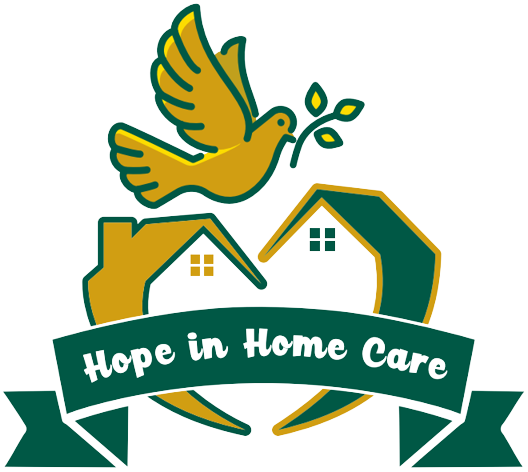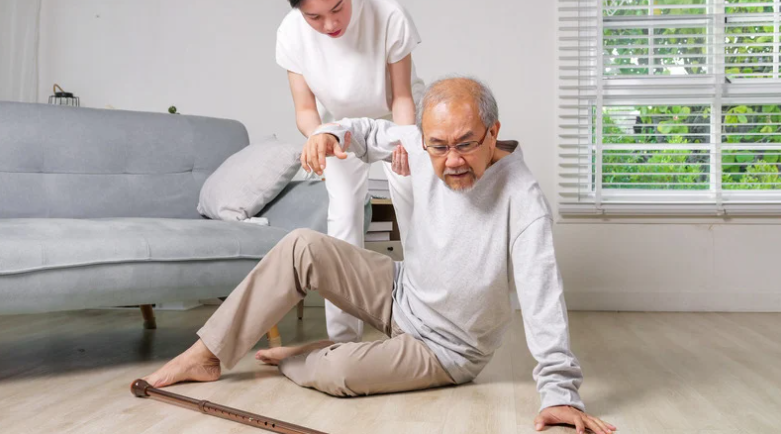As we age, our bodies undergo various changes that can increase the risk of falling. Falls among elderly individuals are a significant concern, leading to severe injuries, loss of independence, and, in some cases, even death. The Centers for Disease Control and Prevention (CDC) reports that one out of four older adults experience a fall yearly, but only a few inform their doctor. Understanding the root causes of these falls is crucial, as it allows us to take proactive measures to enhance the quality of life for our aging population greatly. Uncover the underlying causes of falls in older adults and discover practical strategies to prevent hazardous slips.
Why Do Old People Fall?
Understanding the various factors that contribute to falls in the elderly is crucial for preventing injuries and ensuring their safety and well-being.
Physical Changes with Aging
As individuals age, several physical changes affect balance and muscle strength. Muscle weakness, often associated with aging, can make it difficult for seniors to move around safely. Additionally, balance can deteriorate over time, making it challenging for older adults to maintain stability. Decreased bone density, which is standard in aging individuals, can also lead to fractures, further complicating mobility and increasing the risk of falls.
Medical Conditions
Chronic ailments like arthritis, diabetes, and heart disease can decrease physical abilities, increasing the risk of falls. Health issues such as arthritis can result in discomfort and rigidity, limiting the capacity to move steadily and freely. Cognitive challenges like dementia can also substantially impact falls. Older adults with dementia may encounter bewilderment and disorientation, heightening the chances of unintentional falls.
Medication Side Effects
The older population often requires several medications to handle different health issues. Certain medications may result in side effects that raise the risk of falls. For instance, sedatives and antidepressants can lead to dizziness or drowsiness, affecting seniors’ balance. Some blood pressure medications may lead to a drop in blood pressure when standing, causing lightheadedness and increasing the risk of falling.
Environmental Hazards
The living environment is crucial for the safety of elderly individuals. Inadequate lighting, especially at night, can make seeing obstacles or navigating stairs easier. Clutter in living spaces can create tripping hazards, while slippery floors, especially in kitchens and bathrooms, can lead to accidental falls. Ensuring the living environment is safe and free of such hazards is crucial to preventing falls among older adults.
Tips for Preventing Dangerous Slips

Preventing dangerous slips among the elderly requires proactive measures to ensure their safety and well-being, significantly reducing the risk of falls and related injuries.
1. Exercise and Physical Activity
Regular exercise and physical activity can significantly decrease the risk of falling by enhancing strength, flexibility, balance, and coordination. Programs like Tai Chi, which focus on slow, intentional movements and balanced postures, are especially effective. Training exercises that target the muscle groups can drastically enhance strength, muscle tone, and overall fitness.
Additionally, these exercises aid in preserving muscle mass and promoting joint flexibility. Furthermore, incorporating flexibility exercises, such as stretching, into your routine can help maintain joint mobility.
Encouraging seniors to engage in a consistent exercise routine can yield substantial benefits:
- Balance Training: Exercises focusing on balance, like standing on one foot or heel-to-toe walking, can improve stability.
- Strength Training; Resistance bands or light weights can help build muscle strength.
- Endurance Activities; Walking, swimming, or cycling can enhance cardiovascular health, indirectly supporting overall physical stability.
2. Home Modifications
Making strategic modifications to the living environment can create a safer space for elderly individuals. Consider the following adjustments to reduce fall hazards:
Proper Lighting
- Install bright, non-glare lighting in hallways, stairways, and bathrooms.
- Use night lights in bedrooms and bathrooms to aid in nighttime navigation.
Remove Clutter
- Keep walkways clear of furniture, electrical cords, and other obstacles.
- Consider using cordless phones to minimize tripping risks.
Floor Safety
- Use non-slip mats in kitchens and bathrooms.
- Secure rugs with double-sided tape or remove them entirely.
Install Safety Features
- Add grab bars in bathrooms, particularly near toilets and showers.
- Install handrails on both sides of staircases.
- Consider stairlifts for multi-story homes.
3. Medication Review
It’s essential to have regular medication reviews with a healthcare provider as this can help identify any medications that might increase the risk of falls due to side effects. Here are some steps to take:
- Consult with Healthcare Providers: Schedule periodic medication reviews with doctors or pharmacists. Discuss any symptoms, such as dizziness or drowsiness, after taking medications.
- Adjust Timing and Dosages: Identify the best time of day to take certain medications to minimize side effects. Make sure to modify dosages as required with the help of a healthcare professional.
4. Vision and Hearing Checks
Regular vision and hearing checks are critical in preventing falls since sensory impairments can significantly affect balance and spatial awareness:
- Vision: Schedule annual eye exams to ensure prescriptions for glasses are up-to-date. Address issues like cataracts or glaucoma promptly. Use proper lighting and consider magnifying devices if necessary.
- Hearing: Have hearing tests regularly and use hearing aids if needed. Addressing hearing loss can improve awareness of surroundings and decrease fall risk.
5. Assistant Device
Assistive devices offer extra support and stability for individuals at a higher risk of falling.
- Canes and Walkers: Ensure the device is fitted correctly for height and use. Educate on proper usage techniques to maximize safety and efficiency.
- Mobility Aids: Use wheelchairs or scooters when necessary for longer distances. Seek physical therapist advice for the best aid suited for individual needs.
Creating a Fall Prevention Plan

Developing a comprehensive plan addressing individual needs and leveraging available resources is crucial to preventing falls effectively. This plan should be tailored to personal risk factors, involve family support, and utilize community services.
1. Personalized Risk Assessment
Understanding your unique risk factors is essential to creating an effective fall prevention plan. This assessment evaluates your medical history, health conditions, and physical abilities. By identifying specific risks, tailored strategies can be developed to address and minimize these hazards effectively.
2. Family Involvement
Involving family members in your fall prevention plan adds safety and support. They can help by making necessary home modifications, such as installing grab bars or ensuring that walkways are clear. Additionally, having a family member accompany you during regular health check-ups ensures everyone is aware of any changes in your condition and can adjust the prevention plan accordingly.
3. Community Resources
Many communities offer programs dedicated to elderly exercise and fall prevention. These programs often include balance and strength training classes to reduce fall risks. Additionally, professional home safety evaluations are available to help identify hazards in your home and provide personalized recommendations for improvements. Utilizing these resources can significantly enhance your fall prevention efforts and ensure a safer living environment.
Final Thoughts
Preventing falls is crucial for keeping older adults safe and healthy. It dramatically lowers the chances of injuries, hospital stays, and a decline in their overall quality of life. Falls are a significant cause of disability among older adults, so it’s essential to address this issue to help them stay healthy and independent.
Taking immediate action to prevent falls is essential, as is performing individualized risk assessments, involving family members in safety plans, and utilizing local resources. Creating a secure living environment for older individuals demands continual attention and dedication. Implementing thorough fall prevention strategies can aid our elderly population in living more securely and confidently. Consider Hope In Home Care for tailored and professional services that address your requirements and contribute to establishing a safer, more comfortable living space. Remember, a safer home leads to a happier and healthier life for our loved ones. Contact Us Today.


